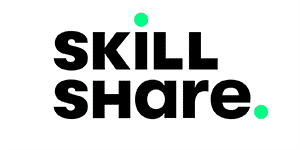Did you know that a $20 million business is considered a small business in the United States? If you are on the verge of starting a business, knowing the amount of work it will take to achieve that may convince you to pick a product or industry in which you are passionate. The “Build Your Business and Brand” course on Skillshare by Rebecca Minkoff helps to get you from having a goal to taking the key actions to create the brand of your dreams – let’s have a look at what it offers.
Table of Contents
Who is Rebecca Minkoff?
Rebecca Minkoff is a self-made fashion designer whose brand is known globally. She touts her perspective shift during the pandemic as life-changing, reframing her time and goals to be able to spend more time with her children. This also helped inform how she approached her other work, including her podcast and work focusing on empowering female entrepreneurs through the Female Founder Collective. She is inspiring and upbeat and basically a walking, talking vision board.
The concept of vision boards can be polarizing, and for some, it will be reason enough to skip this course. Whatever your viewpoint, you can’t argue with the success it’s brought Minkoff.
A New Way to Work
Like for many people, the pandemic brought a shift in perspective for Rebecca Minkoff. It made her reexamine how she was spending her time both with her family and with the things she thought were important in her work. This lays down the foundation of the first chapter of the course by “getting to know what you need to know.” She talks about changing the way to work by extending time horizons for goals, laying down the pathway to success, and slowing down to enjoy the journey. While the latter may seem trite, it is the ultimate takeaway from this course and truly a solid piece of advice. In this section, she also introduces a companion class workbook. While most of the tools she presents do not need it, having a workbook made available is a nice touch for a Skillshare course.
Setting Your Goals
The course then starts with a lesson on defining and setting goals. Minkoff does state in the intro that this course is not about numbers or specific business strategies necessarily, but more so on how to think and approach building a sustainable brand. So, if you’re looking for hardcore business tips on sourcing, finance, and sales – this is probably not the course for you.
What makes a well-defined goal? What does success look like for you? For these purposes, it should not just be related to money and career success. Minkoff asks you to write down all facets of life you want your career to enable and define your big goal to set up your daily life. She shares how the pandemic forced a perspective shift on her NYC treadmill life and helped her re-examine her work and personal life. She discusses getting very granular about how you want your life to look like, what time you want to wake up and go to the office, etc. These specifics will then inform how you make decisions and live day to day to achieve the big goal.

With that exercise behind her, she talks about using the “Quadrant Method” to split tasks into Daily/Urgent, Nice to Have, Pending, and 3-6 month goals (to-dos). She then does the veteran branding move of using her own podcast as an example and walks through splitting each into an actionable to-do list for each day.
In my opinion, this is a simple yet powerful way of ensuring you are spending each day the right way. This methodology helps to keep to do list in perspective and align with the ultimate goal and how it’s leading up to the mission.
Defining Your Distinction
After goal setting, Minkoff goes into brand building. For the uninitiated, this may come off as a bit of a leap but she takes time to walk through how brand values should align to your personal goals. She advises to find what matters to you and build that into your company. Some good examples of brands that do this are Patagonia and TOMS, companies that extend their reach beyond dollars and cents into impact.

Once the brand values are set, it is time to define the ideal customers. She walks the viewer through what is essentially known as a Personas exercise in marketing. What does your ideal customer do? Where does he/she go? What do they eat? Building out this granularity that leads to the world of this customer will then get you close to the goal of “identifying your very own tribe of ideal customers.” As with each lesson, this one ends with a nice bullet point summary of actionable takeaways for the viewer.
Creating Your Unified Brand
The next step in the brand building process that is introduced involves using those brand values and brand distinction to build a mood board: i.e. “When you close your eyes I want to be known for these things.” In Minkoff’s case, her brand mood is “black and white with a touch of blush.” This is reflected in her website, packaging, and photography style. She explains to do the same for all aspects of the brand. For example, what kind of tone does your brand’s copy use: humor or straight laced?
She goes into further detail. Does the founder need to be front and center? For Minkoff, she was same age and sex and on the same journey as her ideal customer so it made sense to do so. But this doesn’t have to be and the hero can be product instead. The brand can also use user-generated content. In this case, she advises to keep the look and feel consistent with color and lighting. She then gives examples of this in social media and how it is an extension of the brand and website.

Expanding Your Network
Next up, the instructor goes into dos and don’ts of expanding your network. Minkoff talks about building relationships from acquaintances to confidants as well as finding online communities to grow as a business person. Her advice, like being genuinely interested in the other person and finding out how you can help them, is a good antidote to the dreaded thought of “networking.” She emphasizes the need for gratitude and to look at it as “Like-minded people connecting and helping each other each with a give and a get.
While it’s good information, I would have liked to have seen more of a connection made here between the first two sections and how it ties to expanding your network. At times, the course feels like distinctly separate subjects, and it’s especially apparent here. She then goes back to focusing on the big goal and that you don’t necessarily need to raise capital to achieve it. Again, fair point, but it felt like a turn down a cul-de-sac.
Growing and Scaling
Finally, the instructor addresses the topic of scaling your business once the brand is built. She outlines how macro variables like a recession and the advent of social media can drastically change your business requirements, and hence, the importance of resisting and augmenting your goal to stay in business and grow. She implores the viewers to make sure there is a customer for what they are selling and to pivot until you can scale. Here, she sums up a piece of advice that I agree is critical for any entrepreneur: “Be ready to accept that the market doesn’t want your product.”
I also like two pieces of tangible advice she provides here:
1) To combat creative blocks, do what fuels you: exercise, go for a walk, go to a museum, etc.
2) To combat burnout, do some self-reflection. Are you in a toxic environment? Is someone sucking the energy from you? If so, eliminate time with that person and stop spending time doing the wrong thing. You can also reshape your week to focus on things you’re good at first to optimize your use of energy.
Minkoff closes the course with another series of platitudes that are at the same time unavoidably true: success is sometimes about getting up and continuing in the face of adversity. She leaves us with a message that sums up the entire course and, to me, the key takeaway for building a business: “It’s not about it being the bumpy road, it is the road”
Content highlights
This course provides a good framework for goal setting and developing task priorities to stay the course. I especially enjoyed the Quadrant Method and the idea of re-evaluating your approach, whether it is how you spend each day, who you spend it with, or what it is you are prioritizing. By creating the north star in your big goal, every decision and to-do is pre-evaluated, allowing you to be more efficient and impactful. Use the summaries at the end of each lesson and keep the workbook by your side. It may just help you along the journey.
How much does the course cost?
Courses on Skillshare can not be bought individually – they can only be accessed by signing up for a Skillshare membership. The good news? Skillshare offers e-student.org learners a full month free trial if you use our link (if not using our link, there is normally only a 7-day free trial). As virtually all Skillshare courses will take you less than a month to complete, you can in effect take this or any other Skillshare course for free – or any number of courses that you can finish in a month.
Once your free trial is over, the cost of Skillshare is $165 per year, which averages out to $13.75 per month. This gives you full access to all 34,000+ Skillshare courses. But if you're not happy to continue, you can easily cancel any time before your free trial ends – just go to your payment settings in your account.
If you have no need for a free trial, you can instead get %30 discount on your first year by using this special link instead. With this link, your first year will be just $115.50, averaging out to $9.63 per month. Note that this offer is only valid for new accounts, so it can't be combined with the 30-day free trial.
Conclusion and recommendation
Sometimes, the best advice is the simplest. That’s what I found to be the takeaway from this course, as the instructor’s breakdown of goal setting was the most useful bit. Defining your big goal and using the “ladder up” method is an invaluable exercise I would recommend any entrepreneur to do.
And while there was certainly some good tangible instruction on how to build a cohesive and distinctive brand, some of the course lessons seemed to be out of place. Some minor nitpicking would also be the overly amped music and the dry marker sound on the pad as she is writing. Maybe skip the videos and stick with the workbook and go straight into implementing the valuable lessons provided.




